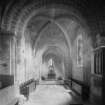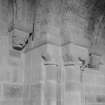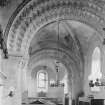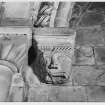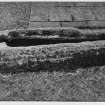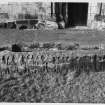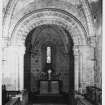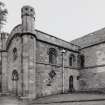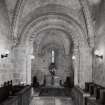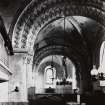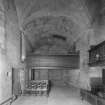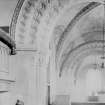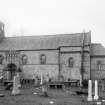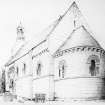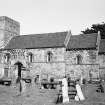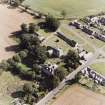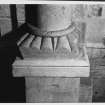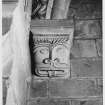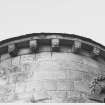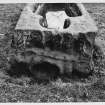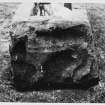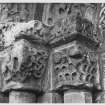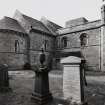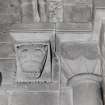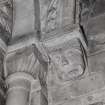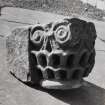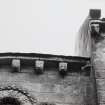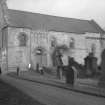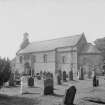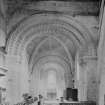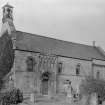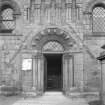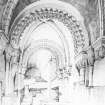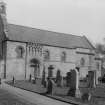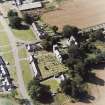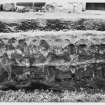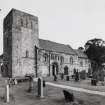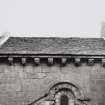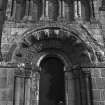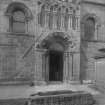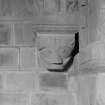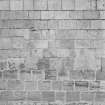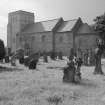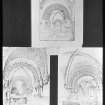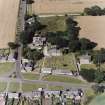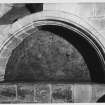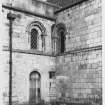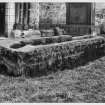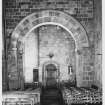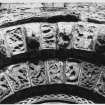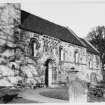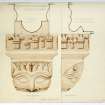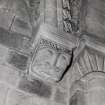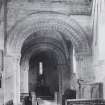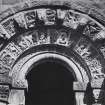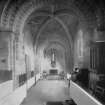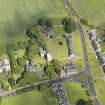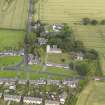Following the launch of trove.scot in February 2025 we are now planning the retiral of some of our webservices. Canmore will be switched off on 24th June 2025. Information about the closure can be found on the HES website: Retiral of HES web services | Historic Environment Scotland
Dalmeny, Main Street, Dalmeny Parish Church
Church (12th Century)
Site Name Dalmeny, Main Street, Dalmeny Parish Church
Classification Church (12th Century)
Alternative Name(s) Dalmeny Kirk; St Cuthbert's Church
Canmore ID 50567
Site Number NT17NW 29
NGR NT 14448 77503
Datum OSGB36 - NGR
Permalink http://canmore.org.uk/site/50567
First 100 images shown. See the Collections panel (below) for a link to all digital images.
- Council Edinburgh, City Of
- Parish Dalmeny
- Former Region Lothian
- Former District City Of Edinburgh
- Former County West Lothian
NT17NW 29.00 14448 77503
(NT 1444 7750) Church (NAT) (11th Century Supposed)
OS 6" map (1856)
NT17NW 29.01 1444 7750 Cist
NT17NW 29.02 14459 77480 Churchyard
Dalmeny parish church, dedicated to St Cuthbert, is the most complete Romanesque church in Scotland; it is still in ecclesiastical use. Built in the 12th century, it originally consisted on a W tower, now demolished, an aisleless nave, chancel and apse. An aisle was added in 1671. There is a fine Norman doorway projecting on the S. The church was restored in 1937, a new W tower being added at that date.
In the church was an altar dedicated to St Bridget; another was dedicated to St Adamnan and St Columba.
RCAHMS 1929, visited 1927; SDD List 1964; A Reid 1915; C A R Radford 1965; H Scott 1915; H Scott 1950.
Dalmeny Kirk (NAT)
OS 6" map (1968)
This church, still in use, is generally as described.
Visited by OS (BS) 15 August 1974
NMRS REFERENCE:
Print room:
Inglis Photograph Collection
Exterior: 2 general views (3 prints)
the Rosebery Aisle
2 details of doorway (3 prints)
Interior: 2 views towards East (4 prints)
view towards West showing building work ? tower (between 1912 - 1931)
W Schomberg Scott Collection:
View of the new font and detail of carving on the chancel arch (4 copies of this, 1 of them in separate bound folder)
Scc. no. 1997/39
Edinburgh Architectural Association - Sketch Book - 1880-1802 - 6 plates - unlocated at time of upgrade.
Thomas Brown colour sketches, Volume 1, Nos 6 and 59 (Adv. MSS. 34.8) - 2 sketches of church and porch - unlocated at time of upgrade.
Library:
Moxon and Carfrae /CBooks. No. 300. 1816 - details of painting work - unlocated at time of upgrade.
(Undated) information in NMRS.
Publication Account (1985)
Situated on rising ground and dedicated to St Cuthbert, the church may have been commissioned by one of the wealthy lords of Dalmeny, either Gospatrick (died 1147) or his successor of the same name (died 1166). Quite simply it is the most complete Norman church in Scotland and the numerous masons' marks on the greyish-white sandstone inside link it with Dunfermline Abbey and Leuchars Church in Fife.
Like Leuchars (and the impressive ruins at Tyninghame, no. 17) it is well-finished and richly decorated; like those in Fife it is a three-cell structure of nave, chancel and sanctuary apse with a roofline (forgiving the ugly, squat tower of1937) stepped from west to east The only extension, the Rosebery Aisle, was built in 1671.
The south entrance is a superb combination of doorway and intersecting arcade above, surmounted by corbels. Its closest Scottish parallel at Dunfermline betrays influence from Durham, and a tympanum presumably once filled the half-circle below the twoorder arch. Far from being decorated with simple chevrons, however, the arch is festooned with carvings. The inner arch appears to include zodiacal signs, fabulous Bestiary figures, and an Agnus Dei; the outer arch projects eight grotesque heads. And either side is a sculptured figure-that to the east a male, with a garment reaching to mid-leg, a sword, spear and triangular sword.
Inside, chancel and apse are equally splendid, and roofed with rib vaults-similar, once again, to examples at Dunfermline. The supporting corbels are carved as heads, grotesque or human according to taste; and on the south side of the chancel, a muzzled bear. The nave has only one window in the north wall to three in the south wall-a local pecularity found also at St Martin's, Haddington (no. 59).
Behind the tapestry on the north chancel wall is a very imperfect painted inscription, the remains perhaps of painted scriptures or lives of the saints. Inset in the apse and chancel floors are several medieval graveslabs; outdoors there are some good 17th- 18th century gravestones, but also a massive stone coffin with head-cavity and decorated on three sides-winged beast at the foot, Christ and the Apostles in thirteen arches along the side. Was this the coffin of the church's builder?
Information from 'Exploring Scotland's Heritage: Lothian and Borders', (1985).
Note (June 2017)
A long and faithful servant
Small and beautifully proportioned, the church sits atop a small hill, in common with many other examples of the period. Though it is regarded as the most complete Romanesque church in Scotland, time has taken its toll for better and worse: an aisle was added to the south side in 1671; the western tower is a reconstruction of 1937; and the rich ornamentation typical of the style has suffered from the elements. The surrounding village of Dalmeny retains elements of its medieval layout but was extensively remodelled in the 18th century as part of a series of Improvements on the Dalmeny Estate that included the creation of the designed landscape at Dalmeny Park by the 3rd and 4th Earls of Rosebery. In the 19th century an area to the south of the church was mined for shale and an oil works was established, leaving a distinctive red shale bing that has been successfully landscaped. These old agricultural and industrial landscapes were bisected, first by the railway and the Forth Bridge in 1888, then the motorway network and the Forth Road Bridge in 1964, and now by the Queensferry Crossing. Through each of these periods of change, the parish church has remained as a central node for the community.
Church
The first church was dedicated to Saint Cuthbert and probably built by one of the wealthy lords of Dalmeny in the 12th century. Like any medieval church it has seen some changes but escaped the worst of the destruction during the Reformation. The tower (reconstructed), nave, chancel and apse are accessed through fine Norman arches. Simple but ornate, the chevrons and rib vaulting are striking when the light shines through, while corbels bearing grotesque heads support the arches. The south door is a splendid affair with rich carving topped by a blind arcade, but the builders did have to face some limitations: the narrow windows are relatively few in number, possibly reflecting the costs of glass making in Scotland at the time. The external walls of the chancel and apse bear some 46 corbels decorated with grotesque heads, mostly with human features, but interspersed with animal heads, and it is originally thought that the nave was similarly designed. Additions are limited to the Rosebery Aisle, built for the Earl of Rosebery of Dalmeny Estate, and the tower added during a restoration. Squat and sturdy in proportion but in keeping with the overall scheme, it stands on the footings of its medieval predecessor.
Outside the church in the graveyard there are some fine 17th and 18th century gravestones and, next to the south door, a massive stone coffin carved from a single block of stone and decorated with a winged beast, Christ and the Apostles. Perhaps this was the coffin of the church’s builder?
This church is well worth a visit whether you love Romanesque architecture or just like historic buildings, and is often a quiet and peaceful place for reflection. Despite its rich and illustrious history, it has another claim to glory: it is where my wife Lynn and I got married!
Allan Kilpatrick - Data and Recording Projects Officer











































































































